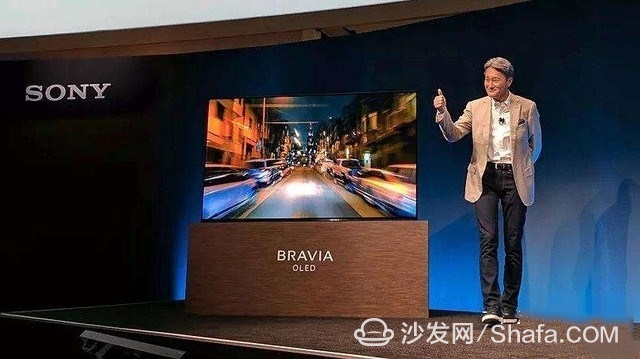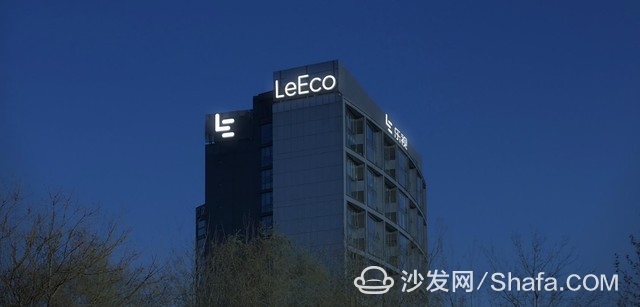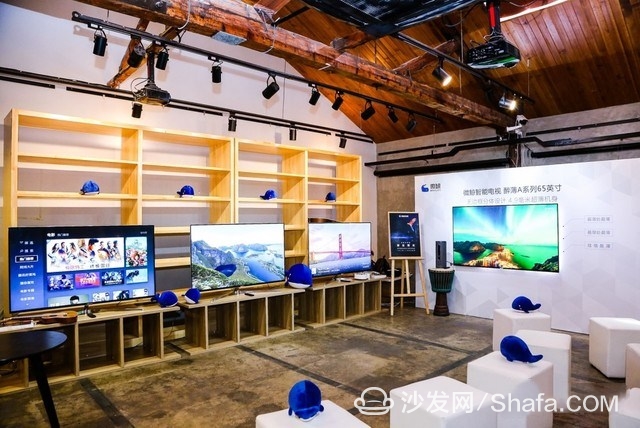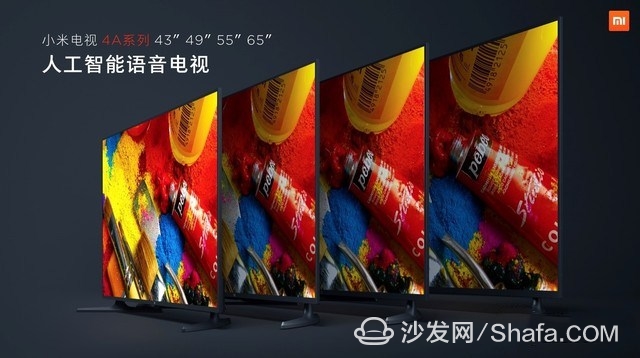In 2017, the television industry experienced a “bitter†year. The joint venture brand “sticks†to the high-end line of defense, and the traditional brand “does nothingâ€. The Internet brand is close to “collectively killed.†Interpretation of the TV industry in 2017, looking forward to the upcoming 2018.
â— Overview of the 2017 TV Industry In 2016, the total sales volume of China's color TV market exceeded 50 million units, breaking the historical record of the total sales volume of China's color TVs in a single year. The situation is excellent. Various research institutions “foster†to predict that the TV market will continue to grow in 2017. Some testing organizations even gave 56 million units of accurate data, and for a time it could be said that “the entire industry is very excitedâ€. Therefore, confident TV manufacturers have increased their capacity to produce crazy preparations for 2017.

In terms of joint venture brands, they gave up the strategy of winning by volume and focused on the high-end market by virtue of their technological advantages. Samsung, Sony, and LG Electronics all have very strong TV products. The comprehensive strength of these products is still the highest in the industry. Sharp relied on "unreasonable" prices to rush to the top five positions in China, and Philips announced the OLED strategic plan at the end of the year. In the upcoming 2018, joint venture brands will still dominate the high-end market.

Next, we must first talk about Internet TV brands...
â— Internet TV brand - a huge test of "life and death" in 2018 Four years ago, when traditional TVs were faced with an increasingly low TV boot rate and they were unable to do anything, the keen Internet companies found an opportunity to enter this industry. They were led by LeTV and Xiaomi. The Internet TV brand reawakened the enthusiasm of young people for TV products and the operating rate of TV products immediately showed a recovery. It is no exaggeration to say that the emergence of Internet TV brands has pointed the way for the development of traditional TV brands.
Little whale and fun will become "private cinema"

Compared to boring traditional brands, Internet TV brands do understand the needs of consumers in the new era. They inject "content" souls into "stupid" TV products, and users "passively take the initiative". They want to watch what they want on demand. Instead of forcing users to "timely fixed-point" to watch radio and television programs. Although the road network of Internet TV brands in 2018 will be very difficult to walk, it must be respected for the "innovation contribution" of the entire TV industry.
After several years of development in Internet TV, when 2017 was originally "a skyrocketing flight", the whale's 4.9mm "drunken" top product was a high-end product. The offensive signals that the price of the 55-inch Internet TV is as high as 9,199 yuan; the cool-to-open "Blu-ray-free TV" is poised for several months and the watch still has a very high-end curved 55-inch TV model.

In summary, it is almost impossible for Internet TV brands to achieve “retroactive†in 2018. With the author’s understanding of the TV industry, if Internet TV brands cannot successfully finance, they will “death†a large storm. The 800 million yuan of TV financing is like a capital game, which is not worth mentioning. In a more direct signal, CoolTV is no longer operating independently. Back in the Skyworth system, Hisense "VIDAA TV" and TCL "Thunderbird TV" have almost no sense of existence.
In other words, the ever-impossible Internet TV brand was already at the very end of its power and was simply unable to pose a threat to traditional brands. In the era of consumer upgrade, the tune of the Xiaomi TV brand is not destined to lead the counterattack. The brand tune of the micro-whale TV has been maintained well. The micro-whale will take the “excellent route†and will certainly not make the brand low. This is very true, but it is also a bit difficult.
In 2018, at least half of Internet TV brands will “death†or “exist in name onlyâ€. This is not a bad thing for the TV industry. Consumers do not need so many TV brands. Internet TV brands that survive after baptism are heroic. The "broke", then, where is the general? This is what we will say next.
◠“General of the World†and “General of Chinaâ€
We have endless stories on Internet TV. The joint-venture television brands have high awareness and the strategy is very clear. The author is willing to share with the readers the sentiments of communicating with these brands. Whether it is OLED, QLED or 8K, these cutting-edge technologies are still in joint venture brands. Hands.

Sony will stick to the OLED high-end strategy. 2017's flagship OLED A1 "Blood Red" has let Sony taste the sweetness. The high-end market can be described as "invincible." In January 2018, Sony will release a new high-end OLED product, and it remains to be seen. Philips will have at least 3 to 5 OLED TVs in 2018 and will be very aggressive. LG Electronics has always been the most abundant brand of OLED product lines. Naturally, it cannot be ignored. By accumulating thousands of momentum in OLEDs, LG Electronics can have a good income by strengthening its marketing.

So, what is the largest domestic brand of Hisense? Laser TV, Hisense believes that laser display is the future of the television industry, but in fact, TCL, Skyworth, and Changhong have laser televisions. However, the focus of publicity is on LCD TVs or OLED TVs, which look more pragmatic than Hisense. However, world-class brands such as Samsung, Sony, and LG are not involved in the field of laser television. When I thought about it, it was quite interesting.
Hisense titled the 2016 European Cup and the 2018 World Cup show strong ambitions. TCL “Xinyi Xess†targets the rising middle class. The two TV brands are right in the direction of improving brand tone. If Skyworth does not have a corresponding strategy and there is a possibility of falling behind, OLED is Skyworth's weapon for hitting the high-end market. However, it has had "a small effect" for so many years because of insufficient product power. This is something Skyworth will focus on in 2018.
â— At the end, compared to the “Bad Strike†Internet TV brand, the traditional TV brands are “Generalâ€, the joint venture brand is “General of the Worldâ€, the core display technology is controlled by the controller, and the domestic brand is “General of Chinaâ€. China's market share. However, the rising middle class naturally has the property to lead the market. When these users aim at Samsung, Sony, LG Electronics, Sharp, and Philips, they will inevitably affect the people around us. Our Hisense, TCL, and Skyworth need to deal with it. Policy.
Internet TV brands have basically lost their right to speak. They can only survive if they are rooted in the low-end market. The three major domestic brands have already gone out of the country to increase their brand influence and product strength. Joint venture brands face the choice of future display technologies. One step beyond redemption. It is not difficult to foresee that the TV market will still be very chaotic in 2018, and it will be very difficult for consumers to choose them. How to choose the right television products for them? ZOL will work hard every day.
Smart TV/box information can focus on smart TV information network sofa butler (http://), China's influential TV box and smart TV website, providing information, communication, TV boxes, smart TVs, smart TV software, etc. Answering questions.
â— Overview of the 2017 TV Industry In 2016, the total sales volume of China's color TV market exceeded 50 million units, breaking the historical record of the total sales volume of China's color TVs in a single year. The situation is excellent. Various research institutions “foster†to predict that the TV market will continue to grow in 2017. Some testing organizations even gave 56 million units of accurate data, and for a time it could be said that “the entire industry is very excitedâ€. Therefore, confident TV manufacturers have increased their capacity to produce crazy preparations for 2017.

2017 is the best year for high-end TV market in China
Contrary to what was expected, China's color TV market fell 11% year-on-year in the first quarter of 2017, which led directly to the inventories of three domestic TV brands, including Hisense, TCL, and Skyworth. The performance of other TV brands was equally miserable. To make matters worse, the prices of LCD panels in the upper reaches of the first half of 2017 have been advancing rapidly. In the face of huge cost pressures, major TV brands have had to slow down the pace of production and have difficulty clearing inventory. In terms of joint venture brands, they gave up the strategy of winning by volume and focused on the high-end market by virtue of their technological advantages. Samsung, Sony, and LG Electronics all have very strong TV products. The comprehensive strength of these products is still the highest in the industry. Sharp relied on "unreasonable" prices to rush to the top five positions in China, and Philips announced the OLED strategic plan at the end of the year. In the upcoming 2018, joint venture brands will still dominate the high-end market.

Many people don't realize that LeTV is the backbone of Internet TV.
In terms of internet brands, LeTV's "collapse" is a "great bad thing" for the entire Internet TV. It is like losing its backbone and the momentum is unsustainable. Although the Xiaomi TV market performed well in 2017, it relied on ultra-low-end products and ultra-low-end prices, which were all self-entertaining and completely failed to take the lead. The success of Xiaomi TV's low-end strategy may lead the entire Internet industry to an abyss, and will completely return the right to speak to traditional TV manufacturers. Next, we must first talk about Internet TV brands...
â— Internet TV brand - a huge test of "life and death" in 2018 Four years ago, when traditional TVs were faced with an increasingly low TV boot rate and they were unable to do anything, the keen Internet companies found an opportunity to enter this industry. They were led by LeTV and Xiaomi. The Internet TV brand reawakened the enthusiasm of young people for TV products and the operating rate of TV products immediately showed a recovery. It is no exaggeration to say that the emergence of Internet TV brands has pointed the way for the development of traditional TV brands.
Little whale and fun will become "private cinema"

After several years of development in Internet TV, when 2017 was originally "a skyrocketing flight", the whale's 4.9mm "drunken" top product was a high-end product. The offensive signals that the price of the 55-inch Internet TV is as high as 9,199 yuan; the cool-to-open "Blu-ray-free TV" is poised for several months and the watch still has a very high-end curved 55-inch TV model.

Millet TV 4 (Â¥7999) A series sold - not good for the Internet TV industry
However, Xiaomi TV 4A released and sold big sales, so that these Internet TV brands caught off guard, the fastest movement of the micro-whale, immediately followed by the entry D series, barely keep up with the rhythm, high-profile release of the “drunken†A series of flagship TVs from only The word does not mention that this is the compromise of the micro-whale to the market, and it also maps the sorrow of the entire Internet TV industry. In summary, it is almost impossible for Internet TV brands to achieve “retroactive†in 2018. With the author’s understanding of the TV industry, if Internet TV brands cannot successfully finance, they will “death†a large storm. The 800 million yuan of TV financing is like a capital game, which is not worth mentioning. In a more direct signal, CoolTV is no longer operating independently. Back in the Skyworth system, Hisense "VIDAA TV" and TCL "Thunderbird TV" have almost no sense of existence.
In other words, the ever-impossible Internet TV brand was already at the very end of its power and was simply unable to pose a threat to traditional brands. In the era of consumer upgrade, the tune of the Xiaomi TV brand is not destined to lead the counterattack. The brand tune of the micro-whale TV has been maintained well. The micro-whale will take the “excellent route†and will certainly not make the brand low. This is very true, but it is also a bit difficult.
In 2018, at least half of Internet TV brands will “death†or “exist in name onlyâ€. This is not a bad thing for the TV industry. Consumers do not need so many TV brands. Internet TV brands that survive after baptism are heroic. The "broke", then, where is the general? This is what we will say next.
◠“General of the World†and “General of Chinaâ€
We have endless stories on Internet TV. The joint-venture television brands have high awareness and the strategy is very clear. The author is willing to share with the readers the sentiments of communicating with these brands. Whether it is OLED, QLED or 8K, these cutting-edge technologies are still in joint venture brands. Hands.

Samsung QLED TV to a certain extent means "quality of life"
As the world’s largest television brand, Samsung continued QLED QD TV strategy in 2018. Frankly speaking, this is not an easy path and needs to endure loneliness. Fortunately, Samsung has enough energy and time to deal with everything. TCL will also adhere to the QLED QD TV strategy, and the high-end sub-brand "Chuangyi XESS" will be quite good. The Samsung Display behind these two brands and COST (Huastar Optoelectronics) stepped up research and development of QLED electroluminescence is the most important thing. Sony will stick to the OLED high-end strategy. 2017's flagship OLED A1 "Blood Red" has let Sony taste the sweetness. The high-end market can be described as "invincible." In January 2018, Sony will release a new high-end OLED product, and it remains to be seen. Philips will have at least 3 to 5 OLED TVs in 2018 and will be very aggressive. LG Electronics has always been the most abundant brand of OLED product lines. Naturally, it cannot be ignored. By accumulating thousands of momentum in OLEDs, LG Electronics can have a good income by strengthening its marketing.

Sharp (Foxconn) is committed to building a complete "8K ecology"
In 2017, Sharp announced the “8K Ecology†strategy in high-end. In 2018, Sharp will “return†to the high-end market for its 8K TV products. I believe that many readers believe that “8K TV is as early as possible†and may read this article: “No Just 8K panel! The interpretation of BOE's first 10.5 Generation Line in the world" helps the 8K industry to be built throughout the industry, and the 8K era is expected to be even faster. So, what is the largest domestic brand of Hisense? Laser TV, Hisense believes that laser display is the future of the television industry, but in fact, TCL, Skyworth, and Changhong have laser televisions. However, the focus of publicity is on LCD TVs or OLED TVs, which look more pragmatic than Hisense. However, world-class brands such as Samsung, Sony, and LG are not involved in the field of laser television. When I thought about it, it was quite interesting.
Hisense titled the 2016 European Cup and the 2018 World Cup show strong ambitions. TCL “Xinyi Xess†targets the rising middle class. The two TV brands are right in the direction of improving brand tone. If Skyworth does not have a corresponding strategy and there is a possibility of falling behind, OLED is Skyworth's weapon for hitting the high-end market. However, it has had "a small effect" for so many years because of insufficient product power. This is something Skyworth will focus on in 2018.
â— At the end, compared to the “Bad Strike†Internet TV brand, the traditional TV brands are “Generalâ€, the joint venture brand is “General of the Worldâ€, the core display technology is controlled by the controller, and the domestic brand is “General of Chinaâ€. China's market share. However, the rising middle class naturally has the property to lead the market. When these users aim at Samsung, Sony, LG Electronics, Sharp, and Philips, they will inevitably affect the people around us. Our Hisense, TCL, and Skyworth need to deal with it. Policy.
Internet TV brands have basically lost their right to speak. They can only survive if they are rooted in the low-end market. The three major domestic brands have already gone out of the country to increase their brand influence and product strength. Joint venture brands face the choice of future display technologies. One step beyond redemption. It is not difficult to foresee that the TV market will still be very chaotic in 2018, and it will be very difficult for consumers to choose them. How to choose the right television products for them? ZOL will work hard every day.
Smart TV/box information can focus on smart TV information network sofa butler (http://), China's influential TV box and smart TV website, providing information, communication, TV boxes, smart TVs, smart TV software, etc. Answering questions.
A flexible printed circuit board is a type of PCB designed to meet the needs of flexible electronic circuits. Originally designed flexible printed circuits to replace traditional wiring harnesses.
Flexible printed circuits are produced using flexible laminates. The flexible laminate holds the conductive foil as well as the dielectric substrate. Flexible circuit boards can be three-dimensionally routed and can be appropriately shaped to fit the available space.
Flexible PCB,Flexible Circuit Board,PCB Production Process,PCB Process Technology,Circuit Board Manufacturing Process
Huizhou Liandajin Electronic Co., Ltd , https://www.ldjpcb.com
